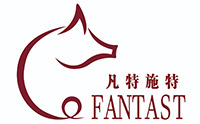12
2022-12
Design and precautions of feed formula
author:
source:
Feed Industry Information Network
Feed products should have the following characteristics: nutrition, physiology, marketability, safety, economy, and practicality. Now it is described as follows:
1. Nutritionism: Feed formula design must be formulated according to the nutritional needs of animals, and then corresponding feed should be designed according to their specific characteristics, such as animal species, age, weight, purpose, physiological conditions, and living environment.
When considering nutrition, it is necessary to first meet the energy needs of animals, because only by meeting the energy requirements can the demand for protein, amino acids, minerals, trace elements, etc. be considered. Secondly, the ratio of feed energy to protein and other nutrients must be considered to meet the requirements of feed standards. High energy feed also has high protein content; Feed with low energy also has low protein content, and it has a problem of protein energy balance. In addition, considering the requirements of nutrients such as amino acids, minerals, and vitamins. This way, designing the formula to meet the needs is much more convenient.
2. Physiology: The palatability and volume of feed must be adapted to the digestive physiological characteristics of animals. The palatability of feed directly affects the feed intake of animals. If the volume of feed composition is too large, it will cause excessive burden on the digestive tract, affecting the digestion and absorption of feed; The volume is too small, even if the nutrients are sufficient, the animals still feel hungry and in an anxious state. Only by obtaining sufficient energy from food can animals meet their physiological needs, that is, to maintain normal life activities and renewal of body tissues.
3. Marketability: Design must be market-oriented, customer-oriented, and customer-oriented. When designing formulas, it is necessary to clarify the positioning of the product, such as the product's grade, customer range, current and future recognition and development prospects of the product. In addition, attention should be paid to the characteristics of competing products, striving to guide customers to develop towards green feed and produce green food with green feed.
4. Safety: The safety of feed products is not only related to the safety and health of feeding animals, but also indirectly affects human health and safety. Recently, the concept of feed product safety has expanded to include environmental safety. With the improvement of people's living standards and dietary structure, there is a greater emphasis on green food. In addition, with the frequent occurrence of safety incidents in recent years, the Chinese government and relevant scientific research institutions have gradually attached importance to the safety of feed. In this regard, by regulating the food supply, making reasonable use of natural plants and green additives, reducing the emission of nutrients, minimizing the pressure on the environment, and striving for a satisfactory living environment for people.
5. Economy: As a commodity, feed products must consider their economic and social benefits. Formula design should always be based on meeting the requirements of animal nutrition and other aspects, while minimizing feed costs as much as possible. The long-term goal is naturally for enterprises to pursue profits, and the application of new formula methods and software plays a huge role in helping designers pursue economics. The widespread promotion and application of new products have broad prospects for improving the social environment and benefiting humanity.
6. Practicality: A good feed formula should achieve good feed effects, high feed returns, high economic benefits, low costs, and customer satisfaction. This is not something that can be achieved by simply adding a percentage based on theoretical nutritional standards. And it must be repeatedly verified through scientific and rigorous labor practice. It has a long-term iterative process that requires years of experience and numerical accumulation. If the optimal addition amount is required, and the feed also needs a quality tracking service to grasp the product quality and feeding effect, understand customer needs, listen to customer opinions, and provide reliable data for formula design and improvement, the formula has both relative stability and a certain degree of flexibility.
Attention:
1. Reasonable use of feed standards
(1) The determination of nutritional indicators in formula design must be based on feeding standards. Most countries in the world have their own feed standards, among which the NRC feeding standards in the United States are the most widely used. When designing feed formulas, it is crucial to choose appropriate standards, but it cannot be completely copied. Various conditions should be comprehensively considered to provide a certain safety margin, such as excessive addition based on production level, climate change, losses during processing and storage, and special needs. In addition, care should be taken not to violate feed product standards.
(2) Learn from the latest scientific research achievements. Feeding standards are often a summary of previous scientific research results, therefore, it is necessary to regularly consult the latest domestic information, absorb the latest scientific research achievements, and reflect them in product design, such as the application of amino acid chelates and the rational use of enzyme preparations.
(3) Nutritional indicators should be adjusted appropriately according to the actual situation, such as increasing the nutritional content of high-yielding animals, raising the nutritional requirements of animals with poor health and weak conditions, and improving nutrition in high-temperature environments.
2. Pay attention to the practicality of the finished product
When designing a product, it is necessary to consider the target audience, production methods, production level, and production potential of the product, as well as the natural economic conditions, environmental conditions, feeding habits, supply and marketing prospects of the raw materials and products in the region of use. It is also necessary to consider the equipment and feeding conditions of the feed industry, so that the designed product grade and specifications are consistent with the actual situation.
3. To strike a balance between product price and production performance
If we simply pursue feed performance, the product cost is often higher. Conversely, if we simply pursue the lowest product price, the designed product performance may be unsatisfactory. We can only design the lowest priced product and create a product with eternal quality while ensuring product quality.
4. Proper selection of feed resources
Designers should be familiar with the local feed resource situation and make the most of local resources to adapt to local conditions and use local materials as much as possible. Be meticulous in budgeting, reduce economic costs in production, and make feed ingredients more reasonably matched. To achieve this, it is necessary to consider:
(1) Characteristics of raw materials
Considering the toxicity and palatability of certain raw materials (such as meat powder), it is necessary to limit their maximum dosage when making formulas. When making protein feed, the use of high-quality (i.e. low toxicity) rapeseed meal and cotton meal alone can be determined to be ≤ 6%. If both are used, the limit is ≤ 4%. The use of meat and bone meal should be determined to be ≤ 5%. If used to produce granules, the dosage should be appropriately reduced to avoid affecting granulation. A large amount of wheat bran will increase the feed capacity. Using computers to create formulas, representative nutritional values should be selected, extreme data should be avoided, and unclear raw materials should be avoided or minimized as much as possible.
(2) Determine the type and quantity of raw materials to be used
For each type of raw material used, only by determining the optimal nutritional value can the most suitable and cost-effective formula be made, providing the correct basis for feed mills to select raw materials and conduct cost analysis, thus ensuring quality at the lowest formula cost. There are more types, and designing products is easier to balance in terms of nutrition. Adequate but excessive, the quality is difficult to control, and it can easily cause digestive and nutritional imbalances, which can bring problems to production.
5. Reasonable use of premix
The carrier in a 1% premix generally reaches 50% -80%. If a 20% concentrate is made, the premix in the concentrate will reach 5%, which means there will be 2.5% -4% carrier. This is a significant proportion in the formula. Therefore, when designing the concentrate formula, the carrier composition in the premix should be considered to ensure quality and cost control.
6. Reasonable selection of feed additives
Feed additives are the core of compound feed, therefore, they should be taken seriously in formula design, with a clear understanding of which additives need to be added to the feed and which drugs are not allowed or absolutely prohibited from being added. And we must strictly follow the national feed regulations and use safety additives.
Lastest Literatures
2023-04-03
The relevant characteristics of enzyme preparations and their application in animal feed
Feed contains various anti nutritional factors, which can limit the release of nutrients in the feed. In addition, the lack or absence of digestive enzymes in the animal's gastrointestinal tract can lead to a lower digestion rate of feed, affecting the utilization rate of feed and hindering the healthy growth of animals.
2023-02-13
Process nutrition and quality management of chicken powder
Animal protein raw materials include chicken meal, pork meal, fish meal, meat and bone meal, animal by-products
2022-12-14
The mechanism of action of anti nutritional factors and their effects
Antinutritional factors mainly reduce the body's utilization of nutrients such as protein and energy by consuming more endogenous proteins
2022-12-12
Design and precautions of feed formula
Feed products should have the following characteristics: nutrition, physiology, marketability, safety, economy, and practicality.



